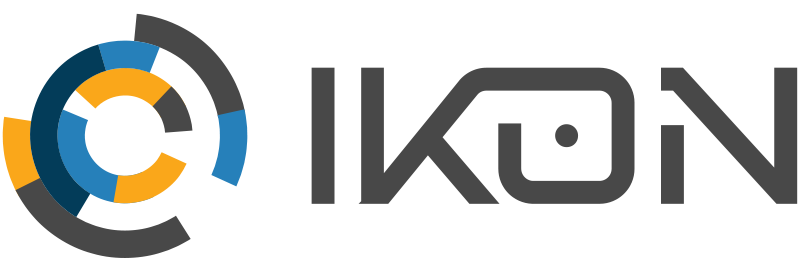The role of Apple devices in the workplace is a widely discussed topic as we also have written a lotabout it, but marketing materials only give a theoretical picture of the benefits of investing in a small or large Apple device fleet, or opting for BYOD, or even a mix of Apple and Windows-based devices. However, Apple has been serious about backing this up with exact evidence, from the many success stories to the Forrester TEI report.
What is TEI?
Total Economic Impact, measures the return on investment, the long-term economic and business impact of an IT investment, for example, if you invest in a new ERP or ticketing system, how much of the initial outlay is recouped, i.e., how long it takes to return the investment and generate a profit. And not just literal financial return; a TEI survey also takes into account factors such as the increase in efficiency of the workforce, the increased loyalty of employees after the investment, and the potential costs that the company avoids by investing.
Forrester's TEI study examines the issue in terms of four factors: costs, benefits, flexibility and potential risks. So, for example, a report may show that an investment is initially beneficial but later may involve risks or threats that make it unprofitable overall.
Apple’s Forrester TEI report
Apple first commissioned Forrester to conduct a TEI report of enterprise Apple device investment in 2019, and it showed very bright results. The survey covered three years, and by the third year, the gains saved with Apple work tools were very impressive. More recently, the company initiated a new report , as in 2020 they came out with the ground-breaking (and since then very successful) Apple Silicon chip, so it was necessary to re-examine the economic impact of devices on the enterprise line. And this yielded even more promising results, as the speed, power and performance gains of Apple Silicon-based devices, coupled with the big.LITTLE architecture, have delivered a major boost to both user experience and employee efficiency.
The survey was quite deep diving, with large enterprises and mid-sized companies, from IT to finance and healthcare, so it can be said that Apple integration is not only a privilege of large enterprises and brings long-term ROI not only in IT, banking and finance, but also in retail, for example. Apple is also set out to focus on small and medium-sized businesses besides large enterprises when it comes to Apple workstations.
Forrester's TEI report showed shocking – though expected – figures for Apple workstations. In short, the results by the end of the third year were: greatly reduced IT support spending (10%!), a reduction of additional hardware and software costs (31%), far fewer data leaks and consequent avoided expenses that are potentially 50% less likely to occur on a Mac®, and, most measurable in the long term financially, greater success in employee retention and very strong increases in employee productivity. And in financial terms, on a per asset basis over the three-year measurement, a Mac investment saved $843!
It is clear from the survey that the use of Apple devices in the workplace has saved the companies surveyed a lot of extra post-investment costs, including licensing fees that would have to be paid for a device from another manufacturer after the investment, and it should also be remembered that most manufacturers' products do not have such a long lifespan (2-3 years in most cases! ) as Apple does, so for less recent work tools there is already a very significant difference in repair costs, running costs and support requirements.
New Apple products are priced higher (around $300 more) than their competitors from other manufacturers, but they also have a much longer overall lifespan (a device used by a colleague in the past still works great on second and third use), come with a free operating system and many built-in applications that can even replace Microsoft 365. Of course, a company with a mixed fleet of devices is unlikely to take advantage of this because of the need for a common channel for collaboration tasks between Apple and Windows users, but for a smaller, Apple-only team they can be a great alternative. We have also written before that Apple products are by far the market leaders in data security, which also saves a company a lot of money down the line, where sensitive data leaks alone can be costly, not to mention the license costs of data protection specialized software...
The fourth benefit mentioned, which is most relevant in HR terms, is also a very important issue, since knowledgeable, committed and proactive colleagues will make a company successful, and an Apple toolkit can make a big contribution to this. A good proportion of employees (as confirmed by the Mac@Cisco project survey) prefer a Mac to a Windows-based device, and the capabilities of Apple products – collaboration capabilities, serious battery life, super-fast processors and of course the seamless harmony in which these devices operate – provide every opportunity to increase employee productivity, encourage them to work with drive and give them a sense of belonging and being valued.
That's all well and good so far, but how does a company know that it will really get such a return on its investment with Apple?
There is a solution to this, with the TEI calculator, provided by Apple professionals and authorized resellers, which is quite customizable and provides a precise calculation for the company, with real data, so the company management does not have to make this decision based on a theoretical question or the results of the Forrester TEI survey, but based on exact information. Obviously, the accuracy of the calculation depends on the accuracy of the data, and it is easier to make such a calculation for a more predictable, older and larger company than for a smaller start-up, but it is a useful option for everyone, and it is worth trying out, whether before a major investment in Apple equipment or even if you only want to order MacBooks® for a development team.
The TEI calculator therefore gives a sense of security to investment professionals and decision makers, allowing them to work together with a sales team using exact data during meetings and the planning period.
Finally, it's worth briefly mentioning a few success stories that prove that Apple workstations really do save a lot of money in the long run and provide a lot of benefits for both the company and the employees.
SAP and Cisco are perhaps the most prominent players in this field, the Mac@SAP and Mac@Cisco projects have provided all the conditions to really maximize the return on investment in Apple's toolkit; both companies operate a dedicated helpdesk for Mac users, provide full and high quality support for Mac employees and have given everyone the freedom to choose their preferred workstation. And the result was a complete success! Obviously, much smaller companies are less likely to provide this level of support and investment for their employees, but Apple does care about the SMB sector as well, besides, they can be provided with full support and operation by external companies with a team of competent professionals, so they do not need to set up their own Apple support team.
Overall, investment in Apple workstations has not been in the enterprise market for that long, but both the evidence and the international success stories show that there is a demand for it, both from a data protection and cost recovery perspective. Of course, it is difficult to coordinate the transition from Windows-based infrastructure, especially in countries where Apple products are not yet as widely used in the private sector as in the US companies mentioned above. But even in these areas Apple is gaining ground, and enterprise integration can be dynamic with the right expert help, and the benefits can save companies a lot of downstream costs in the long run, making it worthwhile from both an IT and a business perspective to embark on an Apple integration project.


